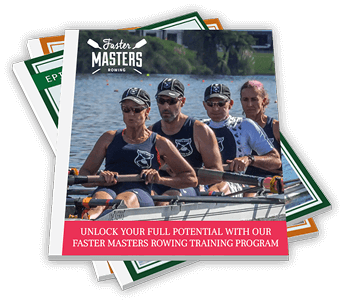Rowers need to have strong fingers to control the oars. Our expert coaches, Marlene and Rebecca, explain
- exercises to improve finger and forearm strength
- how to build aerobic base while training for the CrashBs
Exercises for fingers and forearm strength
We got this question
Could you recommend some exercises to improve finger and forearm strength? My fingers and forearms often tire from trying to feather correctly without using my wrists,
4 rowing hand strength options
First it pays to check you have got the basics correct in your equipment and the technique you use to turn the oar (feathering and squaring).
- Handle grip size - get the correct size for your hands. Most sculling oars come in 3 sizes - small, medium and large. The correct size is one where you wrap your fingers around the scull handle and your thumb can overlap with the tip of your finger - not quite to the first knuckle. This is just a guide. some people prefer larger or smaller handles. Sweep handles do not always offer size variations.
- Initiate the turning movement with your fingers and wrists. Starting the rotation and getting the movement started is what takes the most strength. You don't need to turn the full 90 degrees as you square and feather using your fingers or your wrist. If you get the rotation to 45 degrees, the oar will continue to turn under gravity and drop onto the flat of the collar. Try to find the minimum amount of turning momentum you can give with your fingers / wrist and then relax your grip and let the oar finish rotating without assistance. For sweep, the inside hand does the turning and you can use the same technique to move the rotation to 45 degrees as above.
- Make sure the back of your hand and wrist never falls beneath the level of the handle. Because you need downward pressure on the handle to help roll the oar. See picture below
- Check your boat set-up. Are you able to achieve the correct static positions at the finish? These are legs straight, back leaning backwards 5 degrees, with blades buried under the water your thumbs should be on your lower ribs / bra strap area, your wrists flat, elbows at 90 degrees to the oar shaft. If you cannot achieve this position - seek advice on adjustments you can make to seat height, oarlock height and shoe height.
4 Exercises for finger and forearm strength in rowing
- Curling the fingers and knuckles exercise. [Watch the video for this.] Your extensor muscles aren't strong. Flexor muscles are 4-6 times stronger. They are meant to grip and so get worked more than extensors. This helps strengthen the extensors.
- Elastic band for strengthening the intrinsic muscles in your hand.
- Wrist strength - take a small weight in your hand. It's important to stabilise your forearm. Hold your wrist over the end of a table and flex up and down and side to side.
- String on a dowel rod - roll it up and down with a 2-3 lb weight on the end. Use both hands for this.
Timestamps to the video
19:00 If you have osteoarthritis - don't push yourself into inflammation and swelling with your rowing practice. Don't use your thumb to apply internal pressure on the oarlock either if you have osteoarthritis.
20:00 How tight should you hold the handles? As if you're holding a kitten, puppy or a small bird - Firmly enough so the animal doesn't struggle, not so tight that you crush it..
23:00 If your forearms wake you up at night feeling restless. You should stretch them.
Do the "Karate Chop" drill on the recovery and Open Palm Sculling drill.
26:00 Trigger finger syndrome can be developed from rowing. The anular ligaments get pulled and swelling happens in the tendons.
28:00 How to train for both speed and endurance simultaneously. If you are doing CRASH-Bs erg race in March and enter the 30 minute and the 500m sprint event.
Follow the Faster Masters Rowing training plan first and foremost - pick the 1k racing plan. If you have extra time include a 40 minute low intensity row or aerobic cross training session.
32:30 Keep the group together - over the holidays stay in touch with your crew mates and become accountability partners. Community matters in masters rowing.
Additional Resources
- Blade depth in rowing - what's correct?
- How to feather correctly - sweep and sculling


